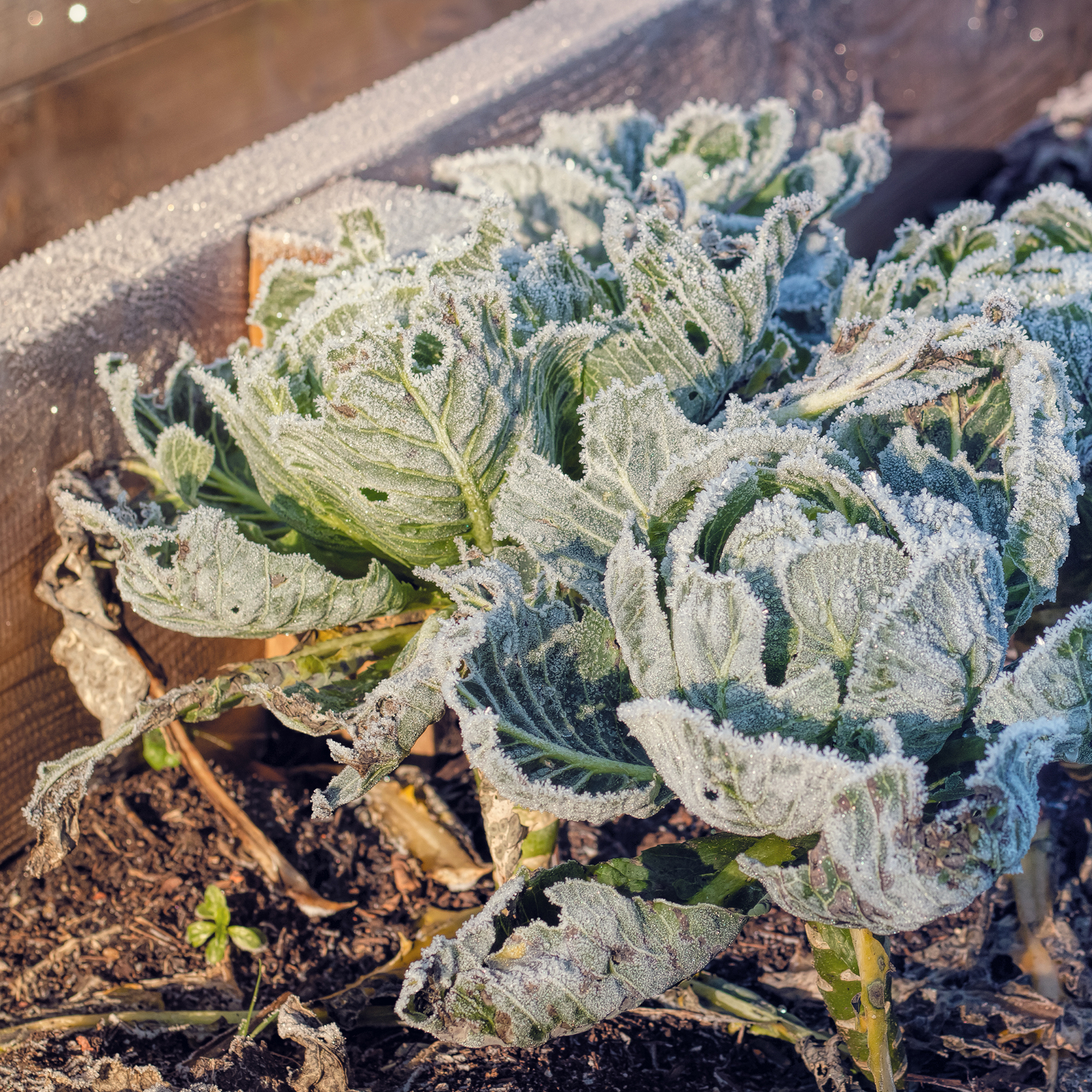
When there's a chill in the air with frost threatening to settle, our minds turn to working out how to best make sure our plants get through the drop in temperature unscathed.
While you may go straight into covering them up, you might have neglected to protect plants with mulch, too. In fact, it's one of the most important things you should do when trying to save from them frost damage.
'During the winter months, one of the biggest threats to your plants will be frost,' warns garden expert Samantha Richards from Gazeboshop. 'Once temperatures drop below 0ºC, most plants will be susceptible to freezing, which can be deadly.' Prevent this from happening to your plants by getting to grips with mulch.
Protect plants with mulch

'Mulch, mulch, mulch!,' declares gardener Sarah Raven. 'Before the first hard frost of the year hits, I’ll mulch my beds, making sure to do so again after the last hard frost has been and gone.'
'This is a great way to seal some warmth and moisture into the soil, protecting the roots from exposure to the worst of the cold weather.'
So let's discover what the experts advise to do to protect plants with mulch...
Why should you use mulch for frost

Most of us have probably heard all about using plant covers to help prevent frost from causing damage to our planting, but mulch adds a new dimension to frost protection.
'The best way to protect plants is by adding a thick layer of mulch around the base,' explains Chris Bonnett, founder of GardeningExpress.co.uk. 'A thick amount of mulch can help keep the plant and its roots insulted to survive the harsh winter frost.'
'Mulching will help sustain the soil’s temperature and stop the roots of your plants from freezing, which could be deadly, as well as helping them retain moisture,' explains garden expert Samantha.
'Helping to retain soil moisture is key to the survival of your plants when dealing with frost,' agrees Jamie Jones, founder of Open Space Concepts. 'Adding a layer of mulch around the base of your plants can help retain moisture whilst also acting as insulation.'
So while covers help from the top down, mulch protects your plants from frost from the base and ensures the root system stays insulated and healthy as, of course, without that, your plant doesn't have much of a chance of survival.
What you can use for mulch

It's all well and good saying your should be adding mulch but if you're a new convert to gardening you may be asking what exactly you can use for this. Helpfully there are all manner of materials that you can use.
'Soil, compost, bark, wood chippings or even leaves around the base of your plants, is a great way to add an additional layer of protection against the cold,' suggests Samantha.
'The best way to ensure this doesn’t freeze is to cover with a good layer of old compost, composted leaf litter or small bark chippings,' agrees Mark Sage, managing director, Marshalls Garden. 'Something that won’t get saturated and work as a nice insulating layer. Just make sure it’s nice and thick.'
'The advantage here is that come spring, it will act as a source of feed and help retain moisture and prevent weeds in the following spring and summer,' continues Mark.
Alternatively, you can of course buy ready made mulch. 'Try Bloomin Amazing or Dobbies’ own brand peat free compost,' advises Marcus Eyles, horticultural director of Dobbies.
How to use mulch to protect from frost

Don't be stringy if you're trying to protect plants with mulch - more definitely is more in this case.
'Apply a generous layer of mulch around the base of your plant to insulate the soil,' advises Andrew White, garden expert at Rhino Greenhouses Direct. 'Insulating the soil will help retain heat and protect the soil from the frost. When applying mulch in winter ensure that about 2-4 inches of mulch are applied to the base of the plant and ensure the mulch is not compressed to allow adequate airflow and drainage.'
When to apply mulch for frost protection
As with many things in life, timing is everything. 'Make sure to stay informed with the weather forecasts and where possible, prepare your plants the evening before frost is expected,' advises Jamie from Open Space Concepts.
'Leaving it too long can cause the condition of the plants to worsen,' agrees Chris from GardeningExpress. 'Keep an eye on the plants in the morning and night for any visual changes.'

So with a generous layer of mulch applied before the frost kicks in, you're giving your planting the best possible chance of weathering the cold snap.







